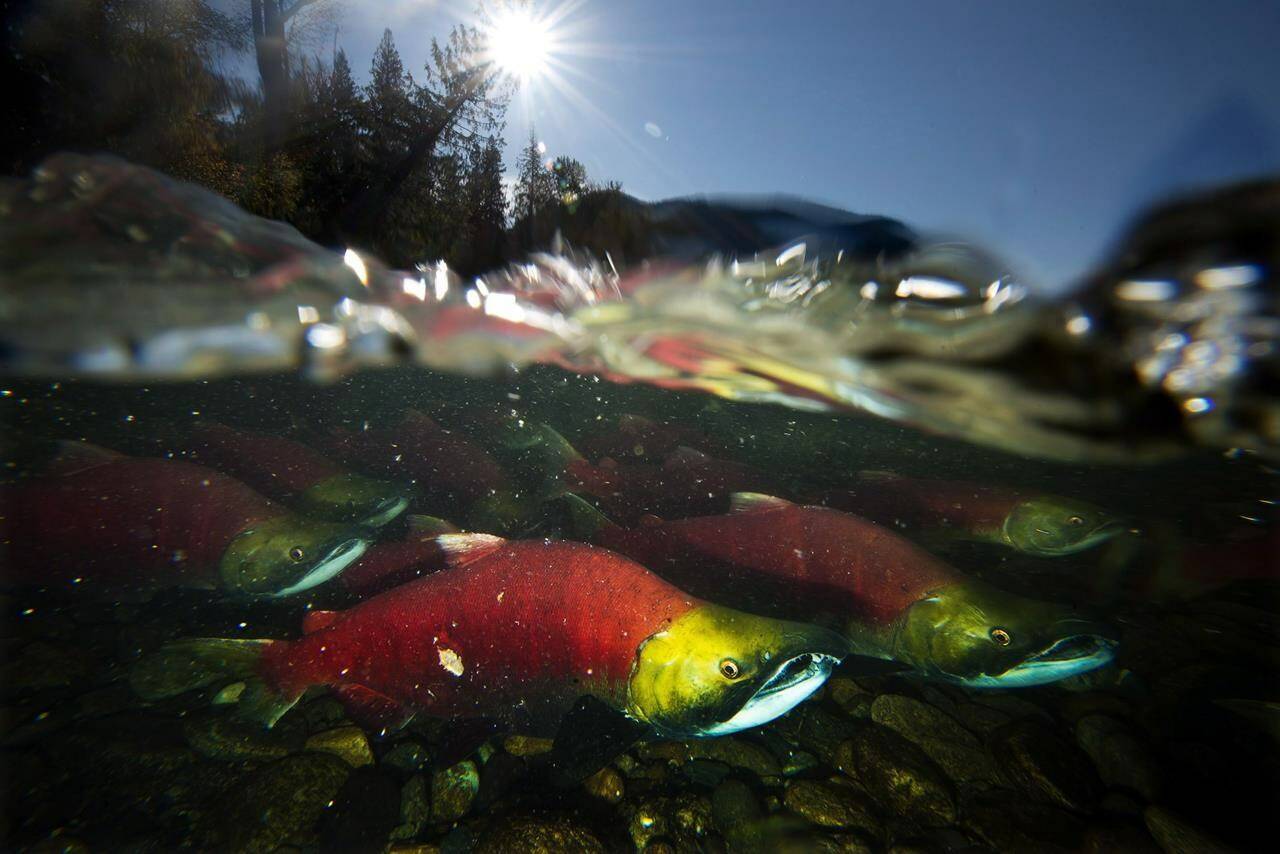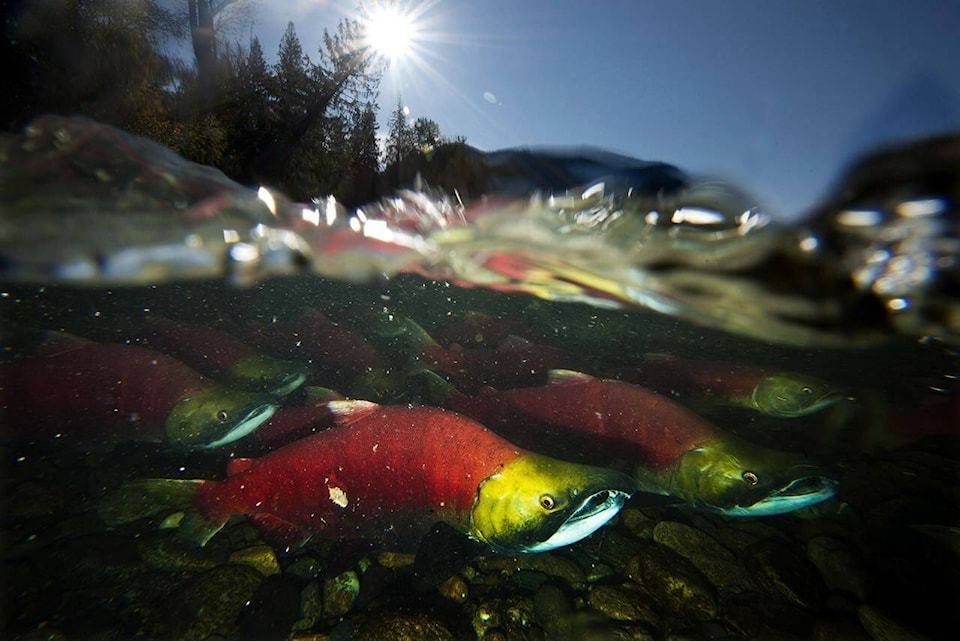As the first leaves of autumn fall, one of nature’s most mesmerizing spectacles unfolds across British Columbia. As hundreds of thousands of salmon make their return for the annual spawning season, the region gives place to a symphony of life and death.
For some, this event may be a source of excitement, but for the salmon, this marks the culmination of their life journey, as they undertake a perilous final pilgrimage back to the place where their story began a few years ago.
A new beginning
A salmon’s life starts in the fresh waters of a lake or river, buried in a gravel nest called redd. Laid and fertilized in late fall, the eggs take on average three months to hatch.
It’s in mid-winter and early spring, when salmon hatchlings, called alevins, break free from their embryos. Protected by a layer of gravel, juvenile salmon start feeding on a nutritious yolk sac located on their belly.
Hiding for the next three months, these fledgling fish are building up the much-needed strength required to face the upcoming challenges.
Once they fully absorb their yolk sac, the alevins emerge from their hideout as fry, in late spring. Ravenous, they are on the lookout for food.
Rupert Wong, a registered professional biologist and co-owner of Environmental Current, highlighted that not all five Pacific salmon species - namely the chinook, coho, chum, sockeye, and pink - follow the same life cycle.
“On one extreme end of the spectrum, you have the chum salmon. As soon as they hatch, they book it to the ocean. They leave the (freshwater) while they are still small,” said Wong. “As for the chinook, they are somewhat in the middle of the spectrum. They spend a bit of time in the river system and estuary, feeding on little invertebrates, to grow heavy and strong before heading out to the ocean around June.
“On the other extreme end of the spectrum, you have the coho that resides in the freshwater for one or two years. They are essentially the largest smolt to leave the freshwater.”
After a certain time spent in fresh water, the juveniles enter the next step in their lives as they begin migrating downstream to the closest estuary - where the river meets the ocean.
Offering the perfect environment for young salmonids, now identified as smolts, these brackish waters offer the perfect conditions to prepare for life at sea.
“The estuary provides that sort of transition habitat where the fish, whether it’s in the adult phase or juvenile phase, it can sort of linger in that brackish environment and allow time for their kidney to undergo that physiological shift,” said Wong.
This period called smoltification needs to be brief since life in the estuary is risky due to the presence of numerous predators and intense human activity.
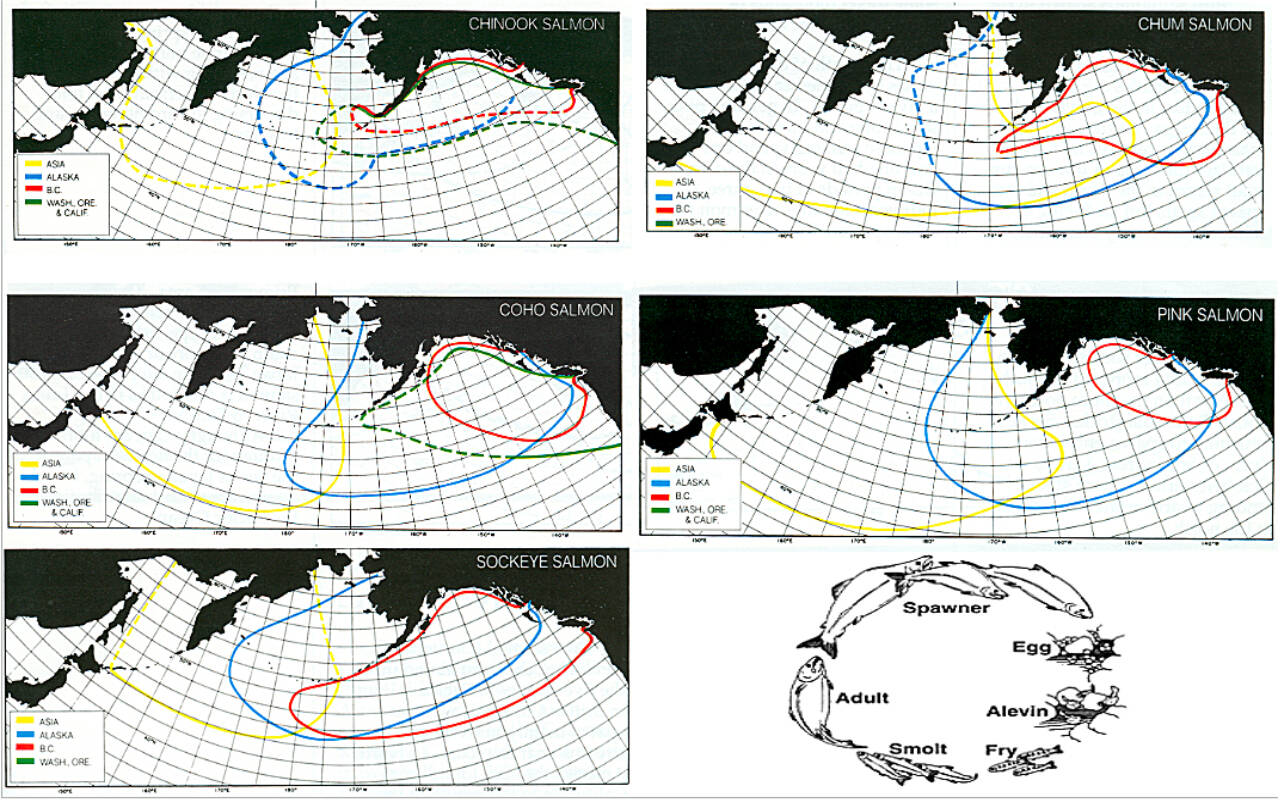
Adulthood - ocean phase
Depending on the species, these silvery fish will roam the Pacific Ocean for the next two to eight years. Salmon born in B.C. can be seen navigating the waters of the Pacific Northwest up to Alaska, travelling thousands of kilometres throughout their adult lives.
From the modest pink, the smallest of the Pacific species, to the mighty king salmon, also known as chinook, they invest all their time at sea to fatten up.
It’s during this migration that the salmon will develop their sexual organs for the upcoming spawning season. Males develop sperm-filled gonads, while females’ ovaries gradually swell, carrying up to 5,000 eggs.
At the onset of the spawning season, fish of reproductive age will travel hundreds of kilometres and simultaneously gather at the mouth of their natal stream. According to Wong, the scientific community does not yet entirely understand how they achieve this impressive feat.
“(There’s a theory) that salmon follow salinity levels in the water,” said Wong. “They have also been known to have something called magnetite within their inner ear, which can align with the earth’s magnetic field (and help them navigate). They also have a very acute sense of taste… and they can detect small concentrations of minerals, like copper and iron. Some scientists argue that each river may have a very specific mineral signature that fish can detect.
“I think the bottom line is that the fish use a combination of different tools to orient themselves and get back (to their birth stream).”
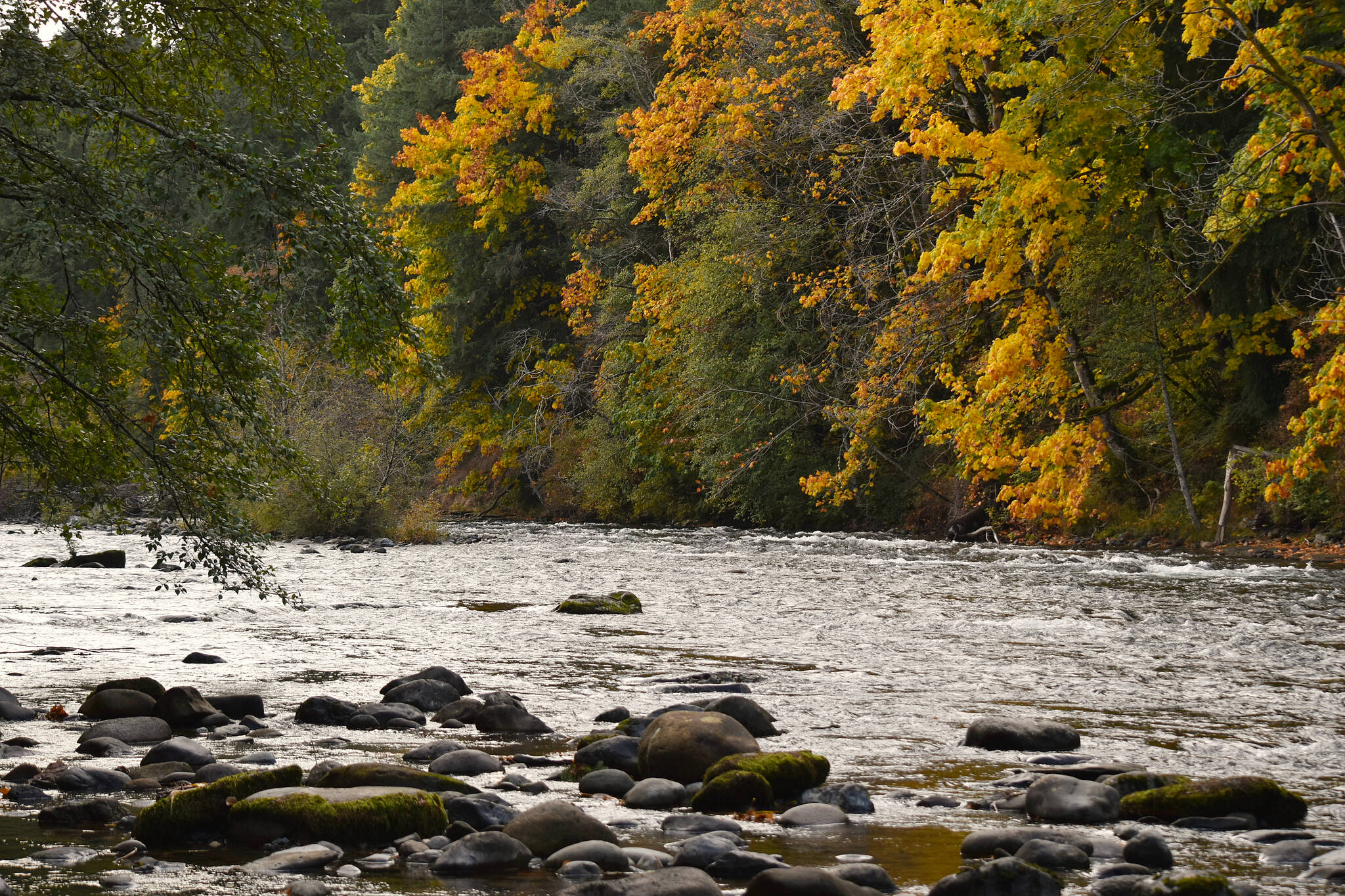
Fertile and braced to embark on their final journey, all salmon gather in their respective estuary and go through a phase of reversed smoltification, re-adapting for a short-lived stay in fresh water.
Undergoing a series of physiological changes, their skin transitions from silver to shades of purple, brown, green, or bright red, depending on the species. Males may develop their emblematic back hump and hooked upper jaw while receding gums will give way to a fearsome set of sharp teeth.
From this point on, salmon cease feeding, relying on the stored body fat they acquired at sea. As their bodies begin to deteriorate, the countdown to death starts ticking. The salmonids race through the region’s intricate watersheds in search of the perfect spawning ground.
RELATED:
Despite numerous obstacles, including arid riverbeds, torrential streams, towering waterfalls, tumultuous rapids, impenetrable log jams and dams, as well as relentless predators, the salmon’s resilience allows them to eventually find their way.
Though many will die along this treacherous upstream trek, a fraction of the population will successfully spawn.
According to Wong, different species of salmon spawn at different distances relative to the ocean to prevent competition. Bigger fish like chinooks, able to move baseball-sized rocks, will opt for bigger gravel, whereas smaller ones, like pinks, will go for sand-like gravel.
When ready, the females will find the perfect ground to establish their redd. Positioning themselves sideways, only a few vigorous tail swipes are required to create the depression needed to lay their eggs.
Flanked by competing males vying for spawning rights, the female salmon releases hundreds of eggs that the nearest suitor will attempt to fertilize by releasing a cloud of sperm called milt.
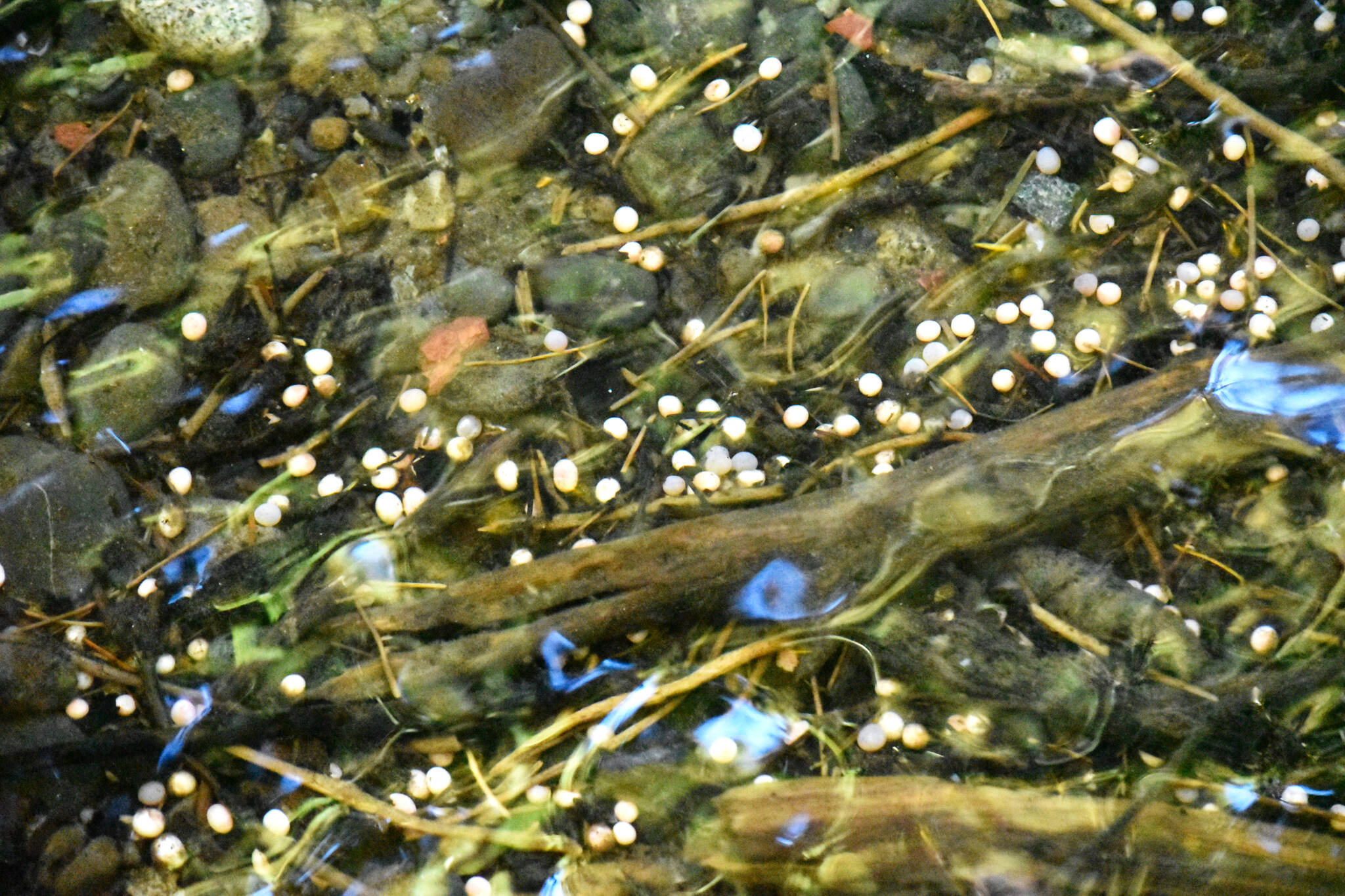
Out of the billions of eggs laid in the province during this brief spawning period, only a minuscule portion will successfully survive, grow to maturity, and give birth to the next generation.
“(If a female lays) 3,000 eggs, only around 300 (alevins) will emerge,” said Wong. “From that, about 50 smolts will leave the (freshwater) system. Typically, from these 50 smolts, you get about four adults that survive, and from that, you’ll get two spawners that ultimately come back.
“From 3,000 eggs to two spawners, that’s a 0.07 per cent survival rate.”
Once this reproductive cycle ends, salmon are but a shadow of their past selves. After weeks of endless effort, having depleted all energy and with a weakened immune system, zombified by parasites and fungal infections, they are awaiting death’s embrace.
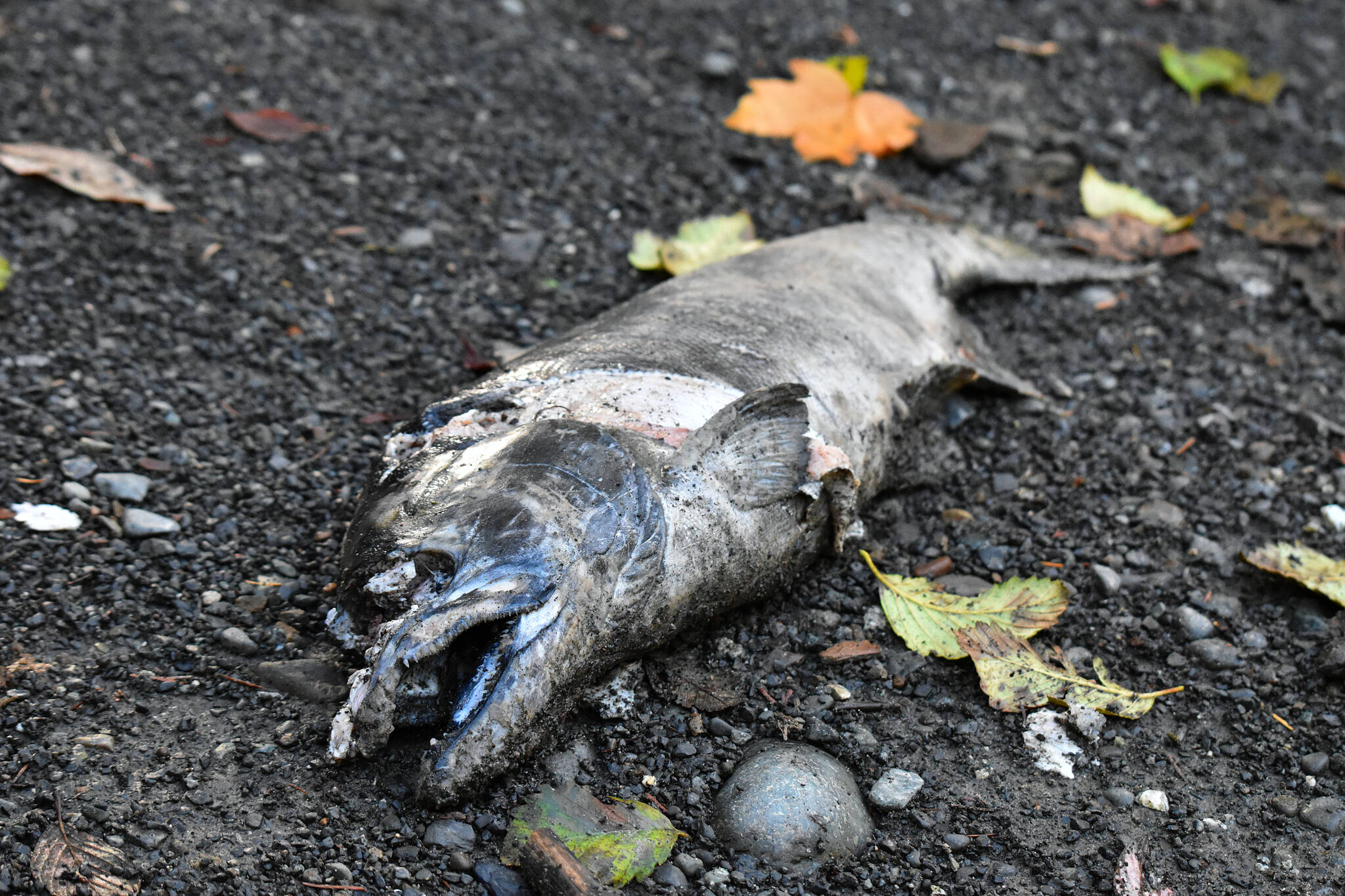
Afterlife
Though the salmon’s effort may seem futile in the end, their purpose extends far beyond death.
The countless carcasses littering the rivers’ and lakes’ shorelines act as a life-bearing cemetery, providing a vital food source for a wide variety of mammals, fish, birds, and insects.
In turn, many animals that feed on these remains will carry them into the forest, where the latter will act as an exceptional fertilizer.
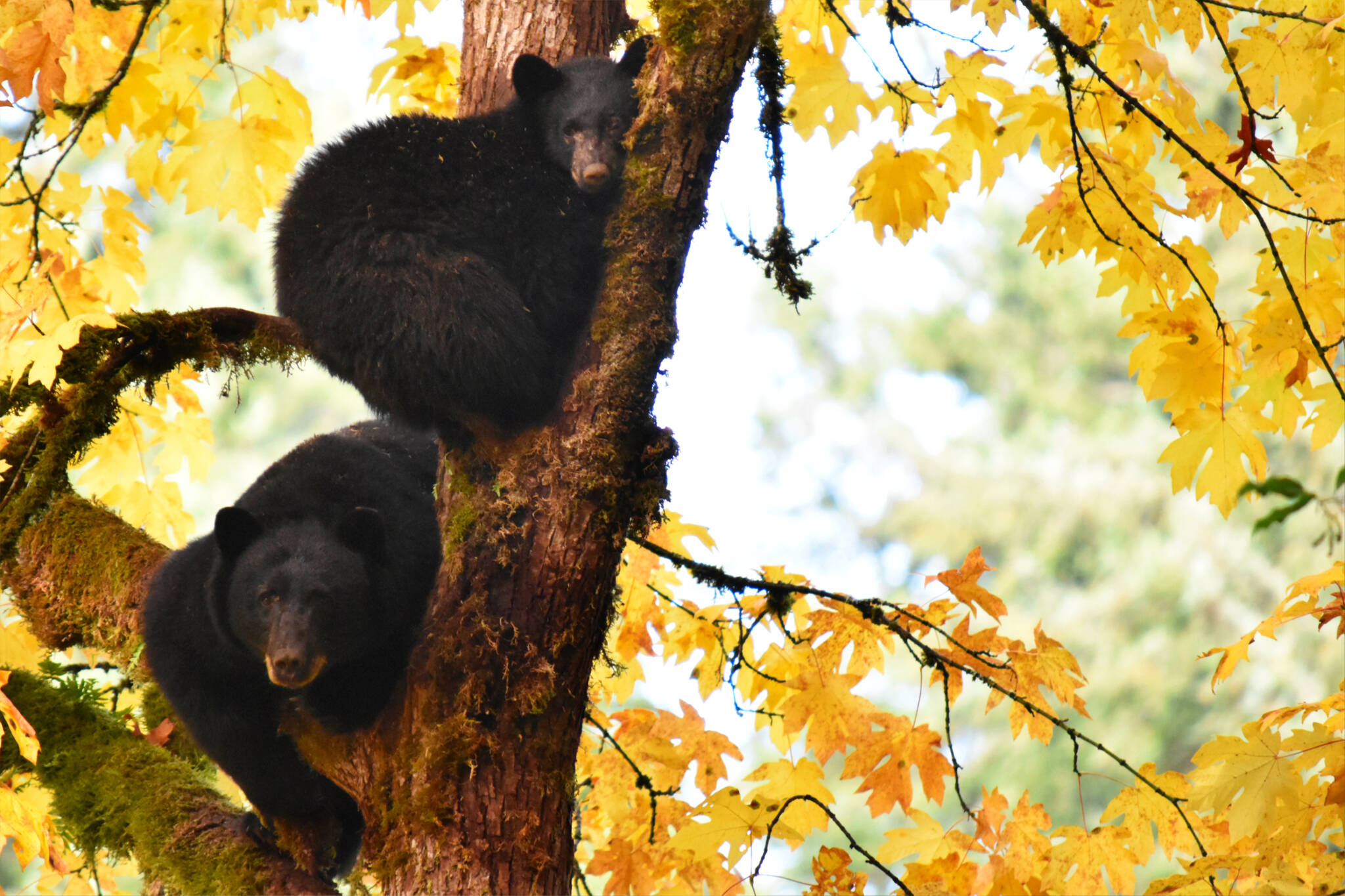
“One kind of unbelievable piece of information that came to light within the last decade is that the genetic material in an old-growth tree has salmon in it,” said Wong. “Bears, wolves, and eagles are dragging carcasses up into the forest and those nutrients go into the soil and are absorbed by the environment. These large salmon are responsible for fueling the growth of these veteran trees. Their role goes far beyond simply laying eggs.”
Alternatively, the leftover carrions will be consumed by hordes of larvae and insects that will, in an interesting turn of events, end up feeding the upcoming generation.
The salmon’s journey is a vital linchpin in the Pacific Northwest’s ecosystem, a testament to nature’s enduring cycle of life and death.
RELATED:
NEWSLETTER:
